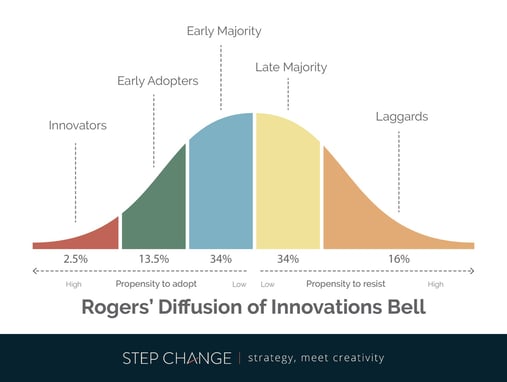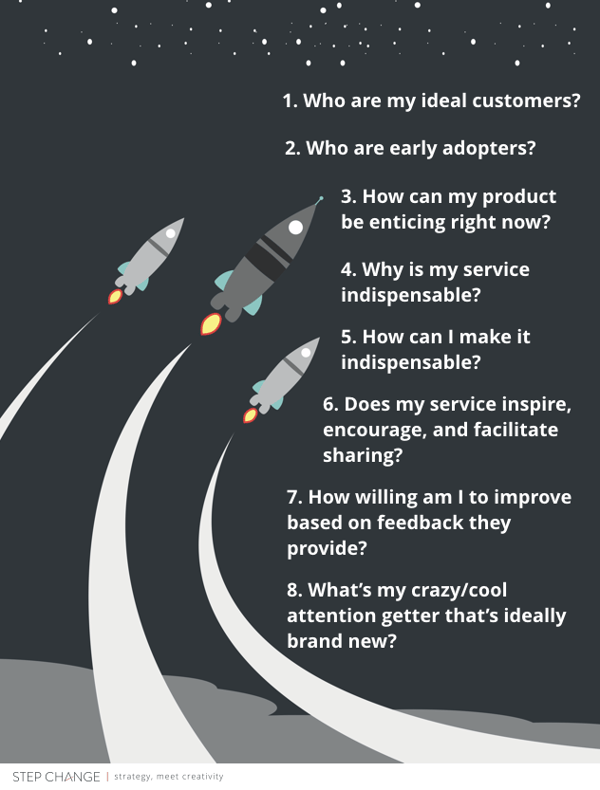Over the years, growth hacking has been a widely used buzzword among startups. And although a lot has happened since Sean Ellis coined the term in 2010, many are still unsure about what growth hacking is and why it matters to their challenger business.
In this post, we’ll talk about what growth hacking is and why it’s for established companies too, not just for startups.
What Is Growth Hacking?
Put simply, growth hacking is finding the quickest way to grow a business. It involves identifying key areas in the marketing funnel or other aspects of your business that you can leverage to get your brand to scale.
If you’re a startup or a challenger business, your direction should be focused on growth. A growth hacker is a marketer whose decision-making, initiatives, and tactics are guided by just that, growth. A growth hacker is single-mindedly focused on growing conversion rates.
Not that traditional marketers don’t care about growth — they do. But not as obsessively as growth hackers.
The Growth Hacker’s Rule Book
1. Have a Product that Users Love
“You know what the single worst marketing decision you can make is? Starting with a product nobody wants or nobody needs.”
— Ryan Holiday, Growth Hacker Marketing lecture
Growth hackers understand that it’s not just about attracting new users — it’s about creating or refining a product experience, which ultimately leads to gaining massive raving fans.
“Working on scalable growth is an optimization problem”, former Head of Rider Growth at Uber and now General Partner at Andreessen Horowitz, Andrew Chen, said.
It could be as simple as highlighting a compelling product benefit or fine-tuning the product’s messaging — or it could be as complex as changing your business model.
When it comes to growth hacking, one case study that comes to mind is Airbnb. This famous startup allows you to book space anywhere in the world; it’s now valued at $31 billion. But this wasn’t how it always was.
The founders began with the idea of turning their own living room into a bed-and-breakfast; they bought mattresses and offered homemade breakfast to their guests. Unsatisfied, they brainstormed and decided to appeal to a different market: guests who were turned down by fully booked hotels.
The idea seemed to be successful because of the better market. But the founders went on to redefine their business even further. They studied guests’ usage patterns and implemented feedback, and came up with what they have now — a service that allows guests to rent absolutely any types of accommodations.
Just as Airbnb’s founders were able to refine their target market, you also need to ask yourself, “Who are my ideal customers?”
2. Focus on Early Adopters — Easy Trial
The Diffusion of Innovation model would tell us that people can be categorised into five segments based on their propensity to adopt new ideas or innovation: innovators, early adopters, early majority, late majority, and the laggards.

Of the five segments, growth hackers focus on early adopters rather than the innovators.
Innovators enjoy, and even obsess about, getting the recent cutting-edge products. When it comes to growth, businesses don’t look to them as they will be gone the moment another business introduces another craze.
You need to focus your attention and your efforts on the early adopters, those people who want to be seen as trend setters.
Early adapters are willing to pay premium if they are guaranteed that using the product will improve how they live and work, minimise cost, or advance their social status.
They are those who are willing to spend an hour on the phone with you to review your product and point out its flaws.
Businesses welcome their feedback because the early adopters understand a brand’s purpose. Known to make sound and well-informed decisions, early adopters are socially respected. This is why businesses count on them so they can further refine the product and to cover the cost of the product’s R&D.
Now have a look at your business. Can you identify the early adopters in your category? How can your product be enticing right now? Is your product indispensable? If not, how can you make it so?
3. Add Viral Elements to Your Product
Customer gets customer — this is the concept of virality and the holy grail of growth hacking. In order for virality to be effective, it needs to be an essential part of your product.
Take, for example, Skype. Before you get to use the product, it asks you to invite people in your network so you can get in touch with them through the app. And when they join Skype, they, in turn, will invite their friends to use it. Other examples of products with a virality naturally built to them include Dropbox, Facebook, and Twitter.
In your business, check if your product or service inspires, encourages, and facilitates sharing. If you think there’s a space for improvement, now is a good time to sit down with your team and find ways to integrate viral elements naturally to your product.
4. Refine and Re-Engage
Constantly testing, measuring, and refining is the key to an effective growth hacking effort. You need to map out your customer journey and ensure that every touchpoint flows smoothly — from data capturing to customer engagement.
The best way to measure growth is through customer feedback.
Using the Net Promoter Score (NPS) will help you determine your growth potential. All you have to do is ask your clients how likely will they recommend your business to their friends. The best time to introduce them to NPS is right after they’ve used your product — not two Christmases after.
Those who give scores of 9 or 10 will promote your business — thank them for their feedback and ask for a video-recorded or written testimonial.
Now those who give scores of 0 to 6 are unhappy clients — your support team should call them immediately and fix the issue that’s bothering them and improve your product. This way, you can turn a negative experience to a neutral one or even a positive one.
Actionable Growth Hacking Tactics for Challenger Businesses
- Email pitch. Reach out to sites that your potential customers read. Introduce yourself and the business. Indicate why should customers care about what you can offer and what makes it so different.
- Guest posts. This tactic is one of the tried and tested ways to draw traffic to your product as blogging is all about providing something valuable to readers. If people think your information is helpful, then they could visit your site to learn more. Upload guest posts to Hacker News, Quora or Reddit to build traffic.
- Blogging for search. Write content on high-ranking keywords that get traffic and feature your product or brand.
- Wisdom of the crowd. When launching new apps or features, use Kickstarter to attract first users with cool prizes.
- PR. Building a connection with reporters can help amplify your reach. Use Help A Reporter or SourceBottle to connect with reporters and journalists looking for leads to the right story.
- Social connections. Connect and send invitations via LinkedIn.
- Be noticed. To achieve a better return on investment (ROI) for your advertising and PR campaign, leveraging stunts is a fantastic way to get your brand talked about.
- Promotion. Leverage promoting cool company events using Yelp.
- Flaunt the new features. Dominate the App Store if you’re promoting genuinely new features. Use Instagram and Snapchat.
- Value proposition. Use About.me and Trippy (startup favourites) to present your very own value proposition and what you do to leverage potential investors and board members for notoriety and fame.
Putting It All Together
Growth hacking is flexible, scalable, and efficient. There’s a reason why it means a lot of things to different people and why it deserves the buzz it gets in digital marketing. But it doesn’t always have to mean venturing in the unknown. Most of the time, brands just need to look at things from a different angle or make use of a fresh pair of eyes to discover new ways of doing things that gets the right results.
Ryan Holiday, the strategist who wrote the book Growth Hacker Marketing, shared eight rules we need to consider before launching a product.

Once you have the answers to these questions, you can leverage using creative, software, data and analytics to find your brand’s best potential for growth.
Ready to step up your marketing game? Download our marketing plan template 2.0 to get started!
Editor’s note: This post was originally published in February 22, 2017, and has been updated for comprehensiveness.

![Why Your Marketing Plan Will Fail [Marketing Plan Template]](https://blog.hellostepchange.com/hubfs/BLOG/Posts/3-Scale/marketing-plan.jpg)









